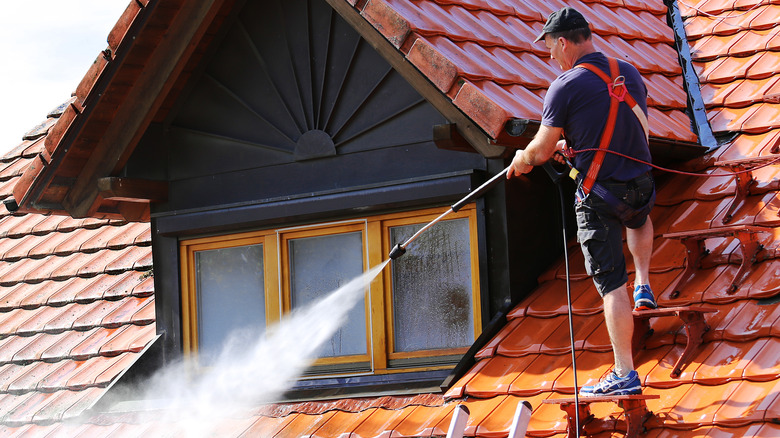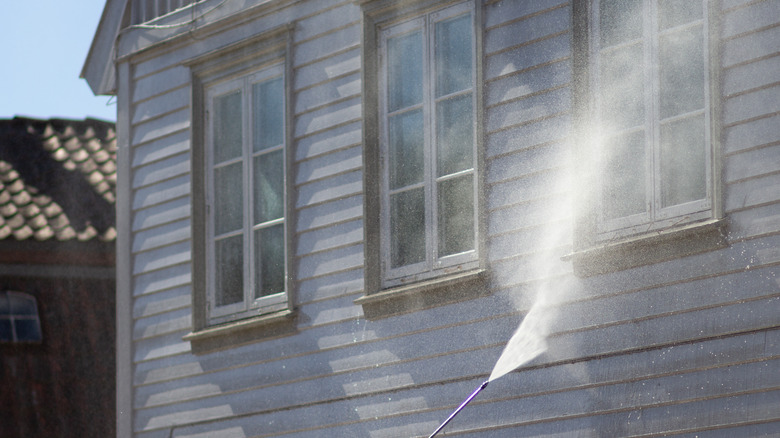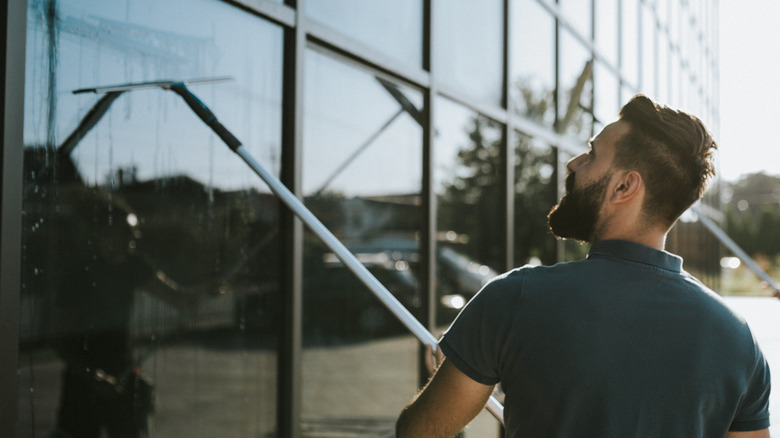Can You Use A Pressure Washer On Your Windows?
Pressure washers are great tools for cleaning, throwing a lot of water with plenty of force behind it to wash away debris. However, there are times when it's smart to soft wash instead of pressure wash because the significant power of the water can cause damage. Consequently, you should take some precautions when pressure washing your house.
Along those same lines, using a power washer on your windows is not a good idea, because of the high risk of causing significant damage to the different parts of the windows. Pay attention to the condition of the windows too. If you have loose panes or missing caulk around the frame, using a powerful jet of water will just cause extra problems.
On the other hand, if you are able to adjust the pressure of the water on the power washer to an extremely low setting, and if the windows are in pristine condition, you will have a better chance of using the tool to clean your windows safely. Experience is key as well. You don't want the first job you do with your power washer to be on the windows.
Rather than deploying a pressure washer, we believe most people will instead want to use a garden hose to put water on the glass before wiping it down with a microfiber cloth and a cleaning solution. Then rinse it again with the garden hose. You can use a gentle sprayer nozzle on the end of the hose if desired.
Best windows to use with a power washer
The types of windows you have installed will play a role in determining whether it's safe to use a pressure washer on the glass. Generally, windows with aluminum or vinyl frames can withstand the powerful jets of a pressure washer better than wood frames. Aluminum frames are more durable than vinyl, while both of these materials provide far more durability than wood.
Regardless of the type of material used in the frames, they need to be in good condition to be able to use a power washer on them. If the weather stripping is missing or loose, or if you have caulking that is old, the powerful water jets could push water behind the seals on the glass. With a wood frame, this extra moisture could lead to rot in the future. Using a garden hose rinses the glass without forcing water behind the older frame.
If you have well-constructed windows and are choosing to use a power washer on them, you should remove any screens before starting the job. If the screens have loose spots or existing damage, the powerful jets of water could enhance these areas of damage and ruin the screens. Additionally, removing the screens makes it easier to reach all areas of the glass to clean them properly.
Finally, before starting, inspect the glass. If there are any cracks, do not use the power washer, as it could weaken or break the glass.
Techniques for using a power washer on windows safely
Certainly, using a pressure washer on the windows lets you clean them faster than doing it by hand with a garden hose. So if you believe your windows are in excellent condition and can withstand the pressure from the power washer, you should use a few techniques to be certain you can do it safely.
As mentioned earlier, use the lowest pressure setting that your machine has. Practice a few times with using the machine on other objects before turning it loose on your windows, so you become familiar with how it feels to use it and with controlling the nozzle. You should keep the nozzle three feet away from the window to give you the best chance of washing the glass safely without forcing water behind the frames and without risking breaking the glass.
If you simply don't want to risk the chance of damaging your windows with the powerful jet of water, there's nothing wrong with that decision. Instead, you could make use of special attachments for your pressure washer that reduce the power of the water jet while still effectively cleaning the glass. Consider adding a squeegee attachment to the end of your power washer instead of a nozzle. This tool sprays water through the squeegee, reducing the pressure while still adding enough water to clean the glass. Only use a squeegee tool that's made to work specifically with your model of pressure washing machine, though.


